The Apple iPhone 6s and iPhone 6s Plus Review
by Ryan Smith & Joshua Ho on November 2, 2015 8:00 AM EST- Posted in
- Smartphones
- Apple
- Mobile
- SoCs
- iPhone 6s
- iPhone 6s Plus
Display
In pretty much any smartphone, displays are going to be one of the most important aspects of the user experience. If a display is dim or has a highly reflective display it will be unreadable outdoors. If the contrast is low, the display can become difficult to read and not particularly appealing to the eye. Other issues like lack of color stability and contrast stability with changes in viewing angles will be much more noticeable than on something like a laptop or desktop where the monitor is usually kept at a constant position in space relative to the eye. In order to evaluate these factors we use both relative comparisons and absolute measurements. Although the human eye is sufficient for relative comparison, for absolute measurements we use X-Rite’s i1Pro2 spectrophotometer for precise color and luminance measurements, along with X-Rite’s i1Display Pro colorimeter for accurate contrast figures. Hardware alone is insufficient for collecting and presenting data, so we also use SpectraCal’s CalMAN 5 with a custom workflow, which allows for collecting and presenting data in a readable manner.
In the case of the iPhone 6s and iPhone 6s Plus, the display appears to be effectively unchanged from the iPhone 6 and iPhone 6 Plus. The iPhone 6s retains the 1334x750 resolution of the previous variant, and the iPhone 6s Plus has the same 1080p resolution as well. Apple continues to use the same M2 scaler as well, which means that although the display’s physical resolution is 1080p Apple is actually rendering the display at 2208x1242 and scaling it to fit the display. The resolution of the iPhone 6s is on the low side relative to most Android devices, which is noticeable but the pixel density is sufficient to avoid any obvious problems here.
As with the iPhone 6, both the iPhone 6s and 6s Plus use dual domain pixels, which make the subpixels look more like chevrons under a microscope. This improves viewing angles by reducing the amount of color shifting that occurs when the display viewing angle is changed. As far as I can tell, Apple continues to be one of the few OEMs that pulls this off effectively. Although contrast and luminance aren’t perfectly consistent with changes in viewing angles, it basically looks like the display is painted underneath the glass. The iPhone 6s Plus does a better job at pulling off this illusion as the higher pixel density helps to eliminate some of the fuzziness or pixilation that might otherwise occur. Samsung gets close here, but for whatever reason ambient light causes noticeable interference effects and in general there’s noticeable color shift when moving the display around. Weirdly enough, the OEM that seems to be doing the best job here continues to be HTC with the One M9+.

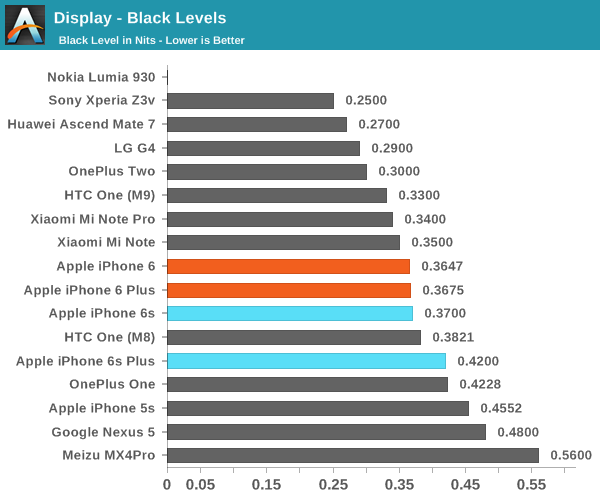
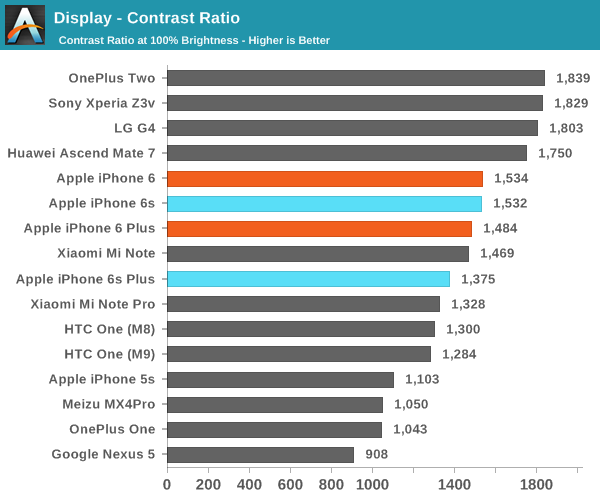
Moving on to our usual brightness and contrast testing, it looks like Apple has improved the maximum brightness of their displays with the use of the new LED backlight driver, but it’s important to note that in the case of the iPhone 6s, the maximum brightness isn’t constant. The behavior is relatively subtle, but with iOS 9 at maximum brightness the display brightness steadily lowers over the course of an hour by about 10 nits maximum. It looks like this effect tails off in both the rate of luminance decrease and overall luminance decrease as peak brightness approaches 500 nits, where the effect appears to be non-existent. It’s likely that this behavior is designed to reduce the battery impact of keeping the display at maximum brightness in all situations. Either way, peak luminance is high enough that it isn’t a struggle to read the display outdoors and contrast in low-light conditions also remains high due to the use of photo-alignment in the liquid crystal layer which helps to make the liquid crystals stay in the right shape.
iPhone 6s
iPhone 6s Plus

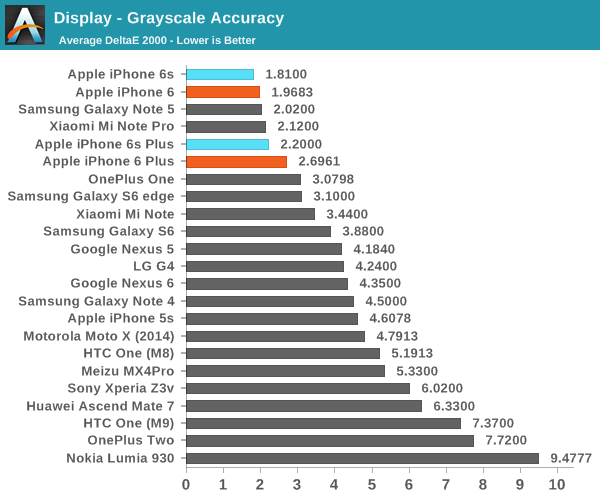
In grayscale, we don’t quite see the near-perfect white balance we saw last year but gamma remains almost impeccable when compared to the industry standard power 2.2 gamma. I suspect that the units we received this time are closer to the mean for white balance compared to last year, as in general due to the blue LED backlights used in most LCDs a colder color balance will generally require less power to display than a warmer one.
iPhone 6s
iPhone 6s Plus

In our saturation sweep testing, the iPhone 6s and 6s Plus both continue to track closely to expected values for sRGB, which is the current industry standard color gamut. I don’t really have any criticism here. The previous iPhone’s displays were of similar caliber, so this is pretty much par for the course if you’re used to iPhone displays.
iPhone 6s
iPhone 6s Plus
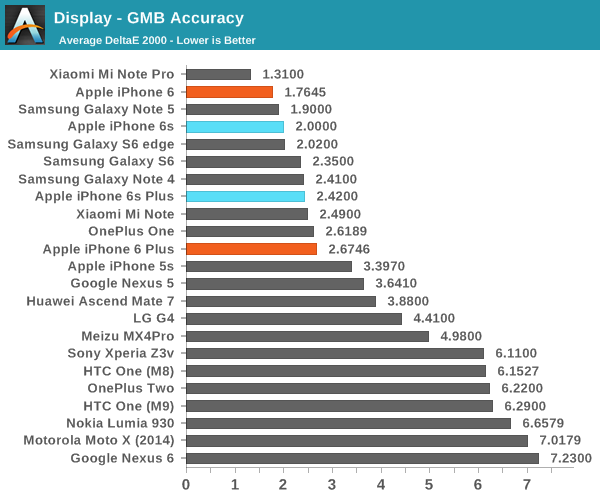
Similarly in the GMB ColorChecker, the iPhone 6s and 6s Plus both pass with flying colors. If you’re using an iPhone 6s or 6s Plus for any remotely color-critical work like viewing and/or editing photos and videos, it’s a pretty fair bet that you’ll be able to rely on these phones to provide an accurate color reproduction in pretty much any condition. Samsung does provide better contrast and the possibility of extra color saturation with their Galaxy S6 and Note 5, but this comes at the cost of potential for burn-in, increased power consumption in certain scenarios, and increased distortion with changes in viewing angles. I think this means that it basically comes out to a wash, but depending upon personal taste one may prove to be better than another.



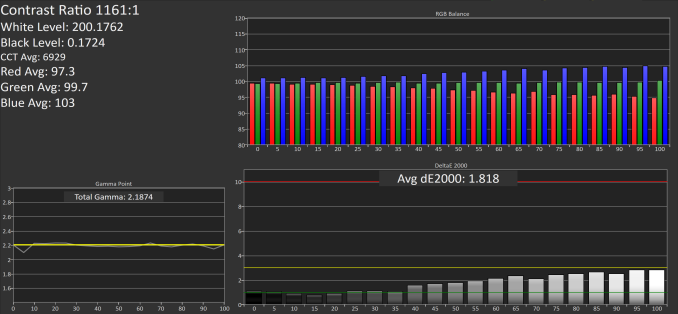
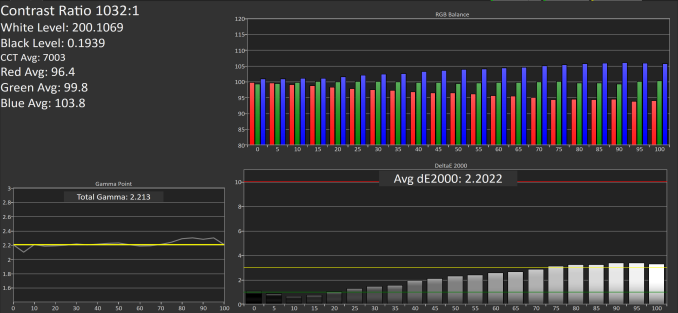
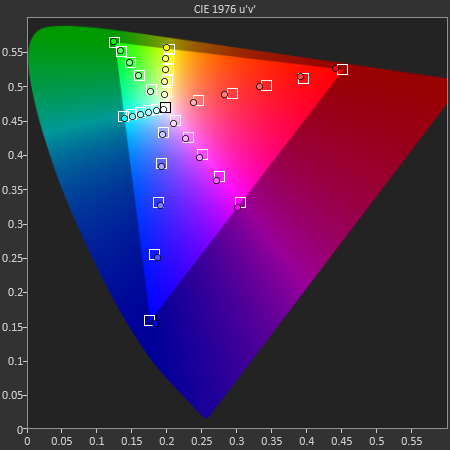
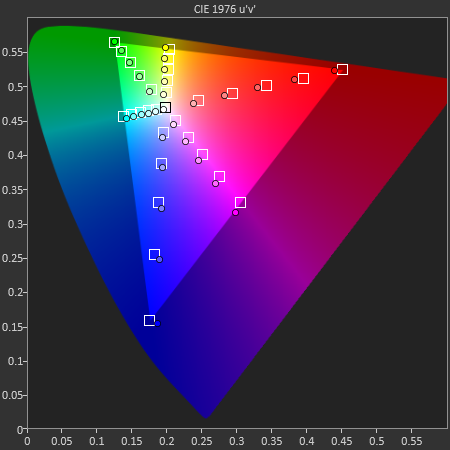
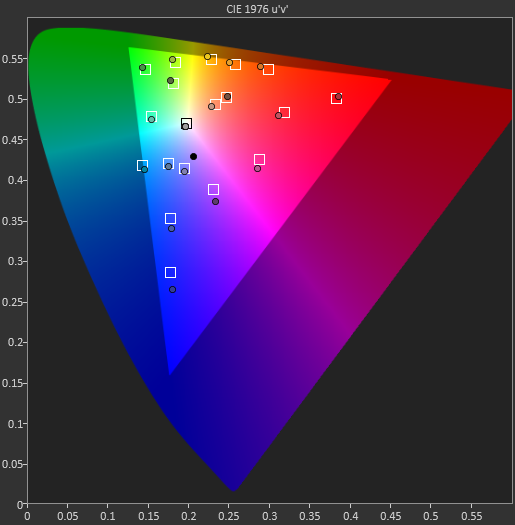
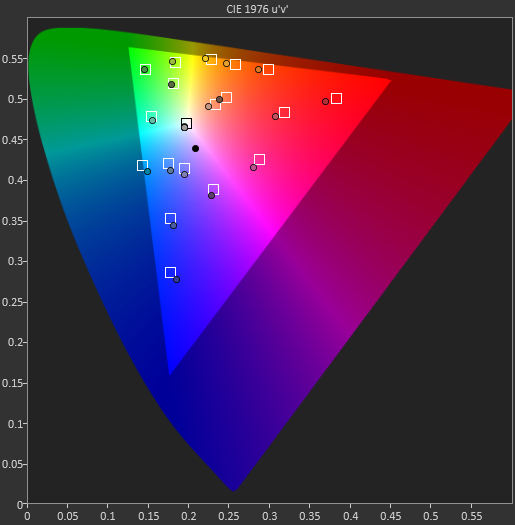








531 Comments
View All Comments
RealityMonster - Tuesday, November 3, 2015 - link
SIGH.The screen isn't 'low res'. The pixels on most Android phones are superfluous. They burn power and you can't see them at normal viewing distances anyway. The extra pixels aren't doing you any good. They're harder on the battery AND the GPU.
The SOC benchmarks are 100% consistent with every other benchmark I've ever seen anywhere. Per clock, the A9 is just the best SOC that exists right now. They really do have incredibly good chip designers working at Apple--Apple bought up a bunch of companies that mattered years ago and everyone was confused until they started cranking out stuff like this. I challenge you to create a real-world test where the A9 doesn't outperform its counterparts. Do you have any evidence to show that the SOC are somehow invalid?
The camera resolution is one of the least important things about the camera, and I wish everyone would stop banging on about the number of megapixels in phone cameras because it really just makes you look like you don't know what you're talking about. You know what other camera has a 12MP sensor? My Nikon D3s. If you try to tell me that a higher resolution sensor in a phone somewhere would take better pictures than my D3s, even if we somehow leveled the playing field in terms of lenses, you'll be laughed out of the room.
2GB of RAM is not the same sort of limitation under iOSs as it is under Android. The nature of virtual machines and garbage collection under Android means that you need a lot more wiggle room for the OS to function optimally.
I can't speak to how 'must have' faster LTE is (it's not, to me). My phone application sits in a folder on my second screen. It's so unimportant, it shares the folder with TimeHop. While it's a fair criticism that some people may care about that sort of thing, the 'phone' function of my iPhone is honestly almost an afterthought.
No micro SD is common across smartphones, and I would consider having it something that you would grade other phones UP for as a nice option, rather than grading any phone without it down. The cost of extra storage is a fair cop; 16GB devices shouldn't even exist anymore, especially if you're going to make each photo take up twice as much space by default, and let the device record 4k video. The proprietary connector is a BETTER connector, but has no real bearing on anything. You get a cable with the phone, they're cheap to buy if you need more. It's the lamest of complaints.
If you want an iOS 9 review, that's something else. This is a review of the iPhone 6s(+). The limitations of the software aren't meaningful when discussion the build of the hardware.
toukale - Monday, November 2, 2015 - link
Why would anyone be shocked at this point. And with the iPad Pro around the corner, Apple have cemented themselves at the best mobile design house on the planet. I never though I would be writing those words a few years ago.Chaser - Monday, November 2, 2015 - link
I know what you mean. I recently had the opportunity to purchase a new tablet. Phone wise I have been an Android man for years. But tablet wise I did my research and the iPad Air 2 has no competition. It is a quick and easy go to device that a a tablet should be with unparalleled development. can't believe I am saying that today. Can't believe i bought one but for a tablet, I love it!jospoortvliet - Wednesday, November 4, 2015 - link
I wouldn't go for an Apple tablet actually. I'd buy a much lighter Sony, I think. But the 6s - I really hope the Android ecosystem gets its act together next year so I can buy a successor to my m7.duploxxx - Monday, November 2, 2015 - link
love the final words. This phone does excel in every possible theoretical benchmark there is :) Uber usage of nand (sequential....), power consumption, graphics etc and mainly ............ price.But then you take the reality benches and final results of real measurable tools and then its all up and downs with other devices out there. Not to mention that optimized IOS sw ends when the apple device is +2y old. it becomes a forced sluggish replacement.
looking at those results, knowing the price of this device it does not come even close to being gold. it should be silver just by the fact of its high price tag. Reality shows that for example the One plus being "old device" with a good balanced pricetag and nice performance scores in most testing is a way better bargain then this piece of fruit. Yeah you can use it as a scale. Its just forcetouch requirement because of the lack of IOS buttons and features. after owning 2 apples, never again for me.
V900 - Tuesday, November 3, 2015 - link
LOLOLOL!Of course.. When the tests and benchmarks put the new (AS WELL as last year's iPhone) above all other handsets, There's not much left for you to do, than just make up some arguments against iPhones.
Like that "optimized software ends after two years". Sure you can't use the newest features on your old phone.
But where Android handsets rarely see updates after a year, and usually get too slow and crufty for everyday use after two years, you see iPhones get updates for 3-5 years after release, and be perfectly fine and fast for their purpose.
My friends 10 year old son just got his 6 year old iPhone 3GS for his first phone. When was the last time you saw a 6 year old Android handset in use?
Heck, when was the last time you saw a 2-3 year old Android phone in use, that delivered a bearable performance?
Compare that with the tens and hundreds of 4-5 year old iPhone 4/5s that you see everyday still in use, and almost as zippy as when they came out? You get what you pay for.
darkich - Tuesday, November 3, 2015 - link
"Heck, when was the last time you saw a 2-3 year old Android phone in use, that delivered a bearable performance?"Now that is such aa ridiculous load of BS right there.
How about you read the first paragraph of the review and then inform yourself on how old the HTC one M7 is.
I myself feel the same as the author, having a 2 year old Note 3.
Nothing released so far makes me want to invest in a new device since the Note 3 still serves me remarkably well.
Heck, it actually performs BETTER than it did when it was new!
There were some issues with the transition from kitkat to Lollipop, probably because of the application needing time to optimize for ART.
But now, everything is a breeze.
I bought a new battery 3 months ago, and even that part (battery endurance) is better now than it was when my phone was brand new!
What makes that that more impressive is the fact that I'm actually using 100% out of my phone, having over hundred apps on it and doing stuff you wouldn't believe we're possible on a pocketable device - using it as a pc replacement, even for video editing and 3D modelling.
If you want evidence, just let me know.
V900 - Tuesday, November 3, 2015 - link
Why would a higher price than a mid-grade One+ detract from the score?!?You do understand that most markets are divided into low end, middle and highend? Right?
Android phones exclusively rule the low end, most of the mid end, and little of the high end.
Since the iPhone is a premium product, regularly reviewed as the best on the market, naturally it has a higher price than a mid end One+ that doesn't deliver close to the premium experience an iPhone does.
Would you also insist a BMW has to have a score deducted, because it's more expensive than a Kia?!?
krumme - Monday, November 2, 2015 - link
What about weight??6s plus is between a note 5 and 8 inch tab s2 !
Its a brick. Nokia style.
And the little comment about contrast is imo not consistent with real world experience.
Wait untill apple gets oled and the tone will shift.
Uncritical review.
iSeptimus - Monday, November 2, 2015 - link
Been waiting for this review. Always interesting to see this sites in depth reviews, for any phone.Lot of butt hurt Android users in the comments already. Is it really so bad that it's a good phone?